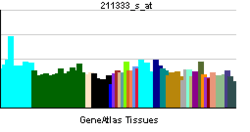Latest News for: fas ligand
Edit
Eat Mangoes for Gut Health—the fruit protects gastrointestinal disorders, says UoH study
The Siasat Daily 03 May 2024
Edit
 The Galveston Daily News
22 Sep 2023
The Galveston Daily News
22 Sep 2023
Coya Therapeutics Licenses Exclusive Worldwide rights to Exosome Engineering Technology (EET) from Carnegie Mellon University (CMU)
 The Galveston Daily News
22 Sep 2023
The Galveston Daily News
22 Sep 2023
Edit
 The Eagle-Tribune
07 Sep 2023
The Eagle-Tribune
07 Sep 2023
Coya Therapeutics Successfully Engineers Regulatory T Cell (Treg) Derived Exosomes with CTLA-4 Protein to Selectively ...
 The Eagle-Tribune
07 Sep 2023
The Eagle-Tribune
07 Sep 2023
Edit
Coya Therapeutics Successfully Engineers Regulatory T Cell (Treg) Derived Exosomes with CTLA-4 Protein to Selectively Target Immune Cells with Potential to Deliver Targeted Therapies Across Multiple Diseases
Pharmiweb 07 Sep 2023
Edit
 Eagle-Tribune
03 Aug 2023
Eagle-Tribune
03 Aug 2023
Autolus Therapeutics Reports Second Quarter 2023 Financial Results and Operational Progress
 Eagle-Tribune
03 Aug 2023
Eagle-Tribune
03 Aug 2023
Scientific Publications.Publication of a paper in Molecular Therapy Nucleic Acids, titled ‘Novel Fas-TNFR chimeras that prevent Fas ligand-mediated kill and signal synergistically to enhance CAR T-cell efficacy’.
Edit
 Messenger-Inquirer
04 May 2023
Messenger-Inquirer
04 May 2023
Autolus Therapeutics Reports First Quarter 2023 Financial Results and Operational Progress
 Messenger-Inquirer
04 May 2023
Messenger-Inquirer
04 May 2023
In April 2023 Autolus announced the publication of a paper in Molecular Therapy Nucleic Acids, ‘Novel Fas-TNFR chimeras that prevent Fas ligand-mediated kill and signal synergistically to enhance CAR T-cell efficacy.
Edit
 Enid News & Eagle
26 Apr 2023
Enid News & Eagle
26 Apr 2023
Autolus Therapeutics Announces Publication in Molecular Therapy Nucleic Acids
 Enid News & Eagle
26 Apr 2023
Enid News & Eagle
26 Apr 2023
- 1


